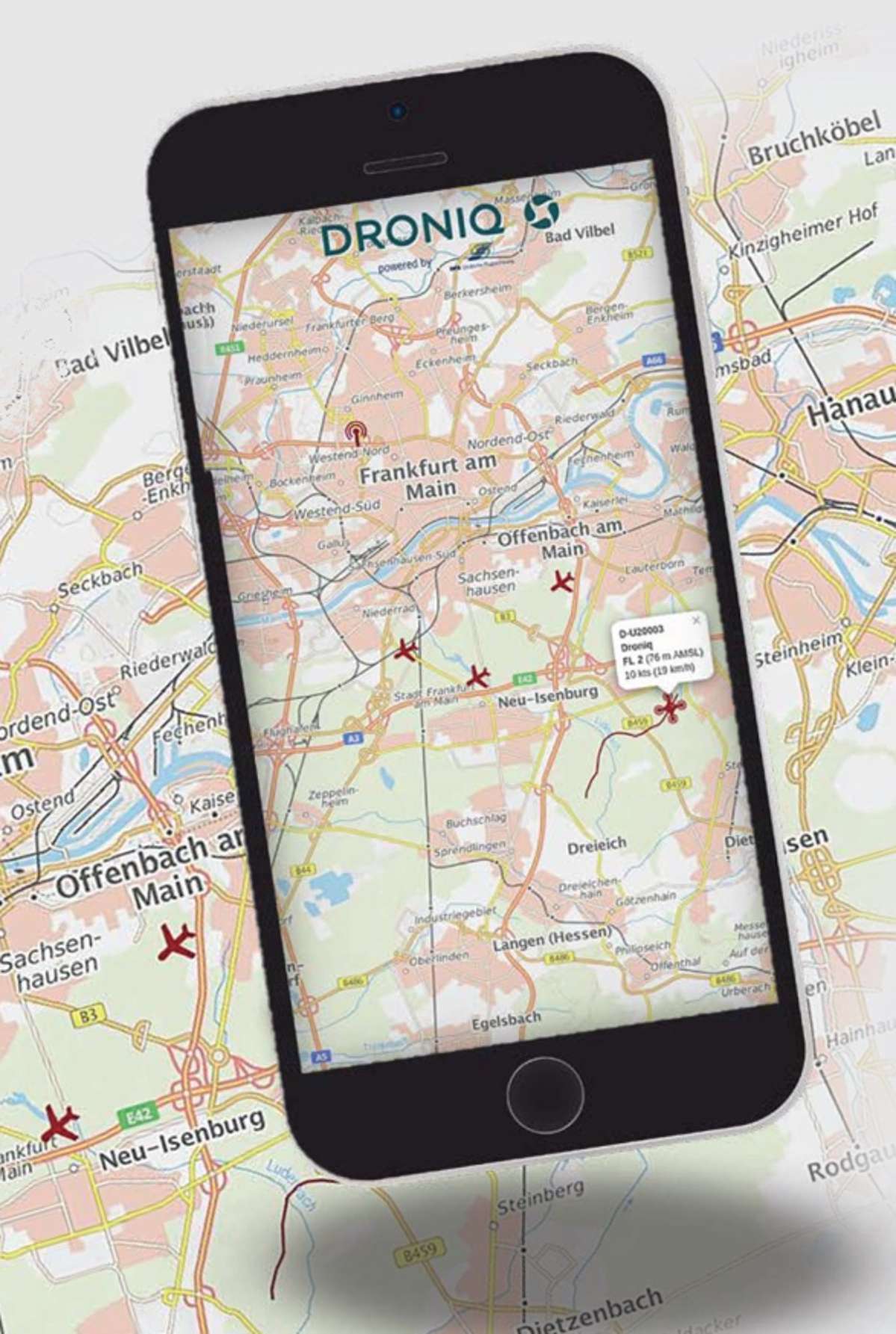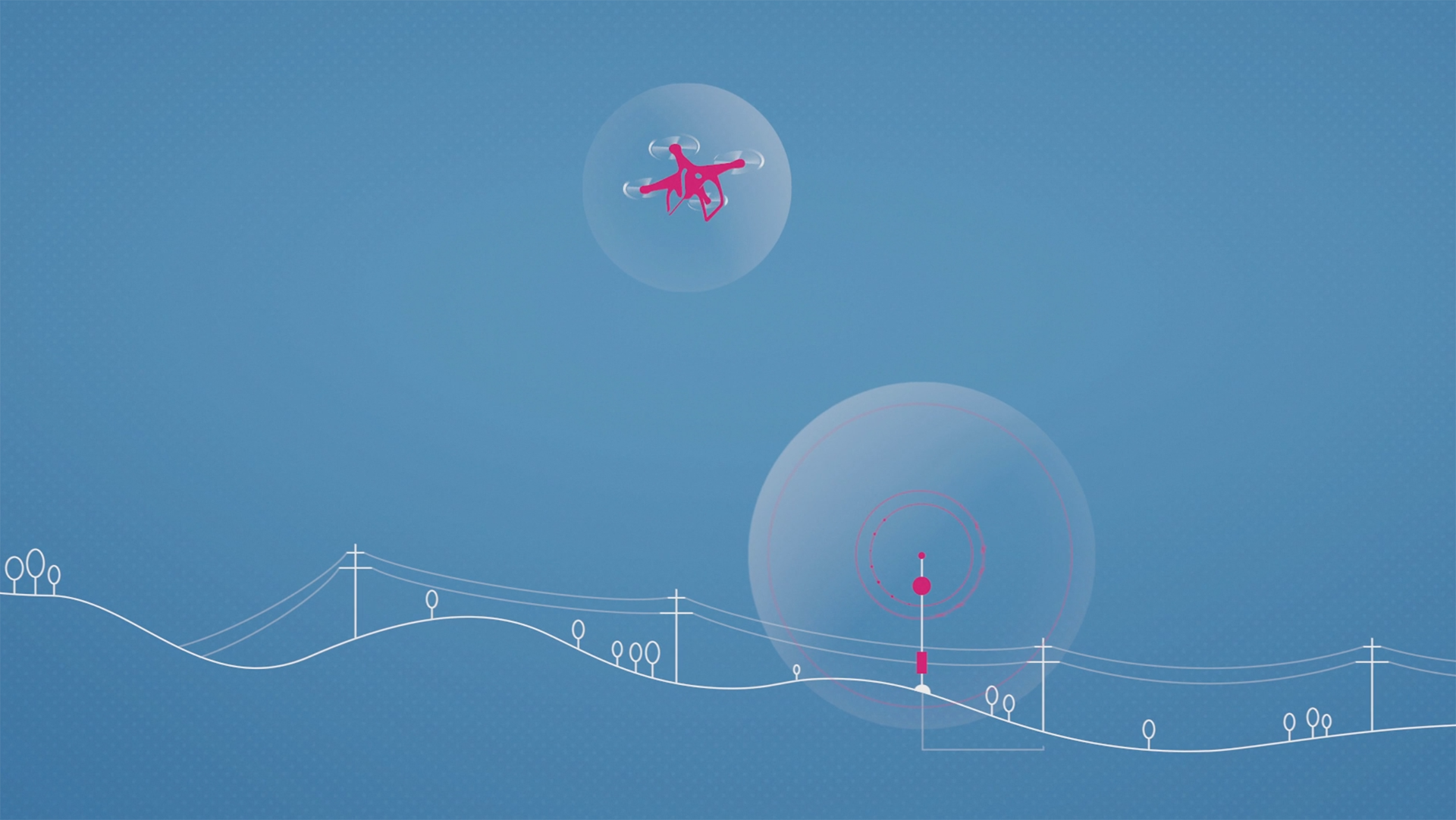Traffic management for drones
The position of the drone is displayed, together with the air traffic in the immediate vicinity, in a digital air situation display. The UTM thus creates an essential basis for being able to use drones in an economically sensible way by enabling flights beyond the visual line of sight of the drone pilot.
An LTE modem, the so-called hook-on device (HOD), is used to locate the drone. It transmits position, camera and sensor data using mobile telephony. In the same way, it receives control and mission data and forwards them to the flight system. In addition, the HOD receives transponder signals via ADS-B (Automatic Dependent Surveillance - Broadcast) and the traffic information and collision avoidance system FLARM. For this development, the project partners (DFS and Deutsche Telekom) were awarded the German Mobility Prize in 2018.
In order to market this hitherto unique tracking technology and to bundle all other services related to the use of drones, DFS and Deutsche Telekom have founded the joint venture Droniq GmbH, which is based in Frankfurt am Main, Germany. It offers services for almost all phases of flight in commercial and private drone operations based on technologies developed by DFS. In addition to the UTM system, Droniq also provides consulting and safety assessments for flights and approval procedures.
www.droniq.de








